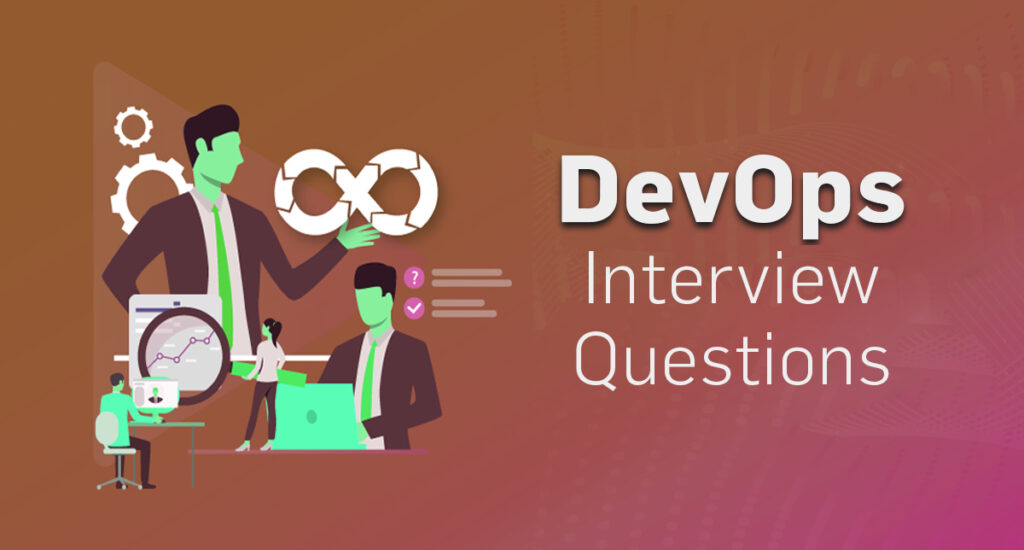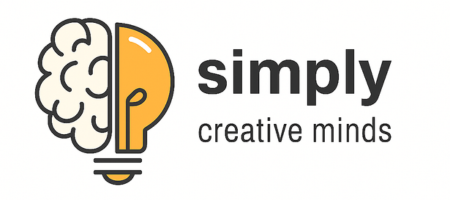
1. What is DevOps?
Answer:
DevOps is a culture and set of practices that combine software development (Dev) and IT operations (Ops) to shorten the development lifecycle and deliver high-quality software continuously.
2. What are the key components of DevOps?
Answer:
- Continuous Integration (CI)
- Continuous Delivery/Deployment (CD)
- Infrastructure as Code (IaC)
- Monitoring and Logging
- Collaboration and Communication
3. What is Continuous Integration (CI)?
Answer:
CI is the practice of automatically integrating code changes from multiple contributors into a shared repository several times a day, followed by automated builds and tests.
4. What is Continuous Delivery (CD)?
Answer:
CD is the process where code changes are automatically built, tested, and prepared for release to production, ensuring software can be deployed reliably at any time.
5. What is Continuous Deployment?
Answer:
Continuous Deployment extends Continuous Delivery by automatically deploying every successful code change to production without manual intervention.
6. What tools are commonly used for CI/CD?
Answer:
Jenkins, GitLab CI, Travis CI, CircleCI, Bamboo, Azure DevOps, GitHub Actions.
7. What is Infrastructure as Code (IaC)?
Answer:
IaC is managing and provisioning infrastructure using code and automation tools rather than manual processes, enabling consistency and repeatability.
8. Name some popular Infrastructure as Code tools.
Answer:
Terraform, AWS CloudFormation, Ansible, Puppet, Chef.
9. What is a container?
Answer:
A container packages an application and its dependencies into a standardized unit, enabling consistent deployment across different environments.
10. How do containers differ from virtual machines?
Answer:
Containers share the host OS kernel and are lightweight and faster to start, while virtual machines include a full OS instance, making them heavier.
11. What is Docker?
Answer:
Docker is a platform that automates the deployment of applications inside lightweight, portable containers.
12. What is Kubernetes?
Answer:
Kubernetes is an open-source container orchestration platform for automating deployment, scaling, and management of containerized applications.
13. What is a pipeline in CI/CD?
Answer:
A pipeline is an automated workflow that defines steps for building, testing, and deploying software.
14. What is the difference between Continuous Delivery and Continuous Deployment?
Answer:
Continuous Delivery requires manual approval before deployment, whereas Continuous Deployment automatically deploys every change that passes tests.
15. What are some benefits of using CI/CD?
Answer:
- Faster delivery of features
- Reduced manual errors
- Early bug detection
- Improved collaboration
- Higher software quality
16. What is the role of version control in DevOps?
Answer:
Version control systems like Git track code changes, enable collaboration, and serve as the source for automated builds in CI/CD pipelines.
17. What is Infrastructure as Code testing?
Answer:
Testing IaC involves validating infrastructure scripts for syntax, security, and compliance before deployment.
18. What is blue-green deployment?
Answer:
A deployment strategy that runs two identical production environments (blue and green), switching traffic between them to reduce downtime and risk.
19. What is Canary deployment?
Answer:
Canary deployment gradually rolls out changes to a small subset of users before full release, minimizing impact from potential issues.
20. What is monitoring in DevOps?
Answer:
Continuous observation of applications and infrastructure performance to detect and resolve issues proactively.
21. What is the difference between a build server and a deployment server?
Answer:
- A build server compiles the source code and runs tests.
- A deployment server deploys the built artifacts to staging or production environments.
22. What is the importance of automated testing in CI/CD?
Answer:
Automated tests ensure that code changes don’t break existing functionality, enabling fast and reliable integration and deployment.
23. Explain the concept of “shift-left testing.”
Answer:
Shift-left testing means performing testing earlier in the development lifecycle to detect defects sooner and reduce costs.
24. What are some popular monitoring tools used in DevOps?
Answer:
Prometheus, Grafana, Nagios, ELK Stack (Elasticsearch, Logstash, Kibana), Datadog, New Relic.
25. What is the role of configuration management in DevOps?
Answer:
Configuration management automates and maintains consistency in the setup of servers and software environments.
26. What are the differences between Puppet, Chef, and Ansible?
Answer:
- Puppet and Chef are agent-based, requiring an agent installed on managed nodes.
- Ansible is agentless, using SSH for communication, and is simpler to set up.
27. What is a rollback in CI/CD?
Answer:
Rollback is the process of reverting to a previous stable version of software after a failed deployment.
28. What is the role of a load balancer in deployment?
Answer:
A load balancer distributes incoming network traffic across multiple servers to ensure availability and reliability.
29. How do you ensure security in a CI/CD pipeline?
Answer:
- Use secrets management
- Scan code and dependencies for vulnerabilities
- Apply least privilege access controls
- Automate security tests
- Use secure communication protocols
30. What is the difference between GitOps and DevOps?
Answer:
GitOps is a way to implement DevOps practices using Git as the single source of truth for infrastructure and application deployments, enabling automation and auditability.
31. What is the difference between Immutable Infrastructure and Mutable Infrastructure?
Answer:
- Immutable Infrastructure: Once deployed, infrastructure is never changed; updates are done by replacing with new instances.
- Mutable Infrastructure: Infrastructure components can be updated or changed after deployment.
32. What is a “build artifact”?
Answer:
A build artifact is a compiled output or packaged file generated from the source code, such as a JAR, WAR, Docker image, or executable.
33. How do you manage secrets in a CI/CD pipeline?
Answer:
By using secret management tools like HashiCorp Vault, AWS Secrets Manager, environment variables, or encrypted files to keep credentials safe.
34. What is the role of a container registry?
Answer:
A container registry stores and distributes Docker images, enabling easy sharing and deployment of containerized applications.
35. What is the difference between a rolling deployment and a blue-green deployment?
Answer:
- Rolling deployment: Gradually updates instances with new versions, replacing them one by one.
- Blue-green deployment: Switches traffic between two separate environments for instant cutover.
36. What is a “pipeline as code”?
Answer:
Defining the CI/CD pipeline configuration and workflow in code files (e.g., YAML) stored in the repository, enabling versioning and easier management.
37. What is the role of testing in DevOps?
Answer:
Testing ensures code quality, reliability, and security at every stage of the development and deployment lifecycle.
38. What is meant by “scaling” in DevOps?
Answer:
Scaling involves adjusting resources (up/down or in/out) to handle changes in load and demand.
39. Explain the term “artifact repository.”
Answer:
An artifact repository stores built artifacts and dependencies, facilitating versioning and reuse (e.g., Nexus, Artifactory).
40. How does CI/CD improve collaboration between teams?
Answer:
By automating integration and deployment, CI/CD reduces manual handoffs, ensures transparency, and provides immediate feedback to developers and operations teams.
41. What is the difference between horizontal and vertical scaling?
Answer:
- Horizontal scaling: Adding more machines or instances to handle the load.
- Vertical scaling: Increasing the capacity (CPU, RAM) of an existing machine.
42. What is the purpose of a service mesh in microservices architecture?
Answer:
A service mesh manages service-to-service communication, providing features like load balancing, encryption, and observability without changing application code.
43. How do you implement logging in a DevOps pipeline?
Answer:
By aggregating logs from different components using tools like ELK Stack or Splunk, enabling centralized monitoring and troubleshooting.
44. What is the difference between a monolithic and microservices architecture?
Answer:
- Monolithic: All components are tightly integrated into a single application.
- Microservices: Application is divided into loosely coupled, independently deployable services.
45. What is Git branching strategy? Name a few common ones.
Answer:
A branching strategy defines how developers manage code branches. Common strategies include Git Flow, GitHub Flow, and trunk-based development.
46. What is the purpose of a webhook in CI/CD?
Answer:
Webhooks are HTTP callbacks used to trigger CI/CD pipelines automatically on events like code commits or pull requests.
47. How do you ensure high availability in a deployment?
Answer:
By deploying redundant instances, using load balancers, and implementing failover mechanisms.
48. What is container orchestration?
Answer:
Automating the deployment, scaling, and management of containerized applications using tools like Kubernetes or Docker Swarm.
49. What is the difference between Git pull and Git fetch?
Answer:
- Git fetch: Downloads updates from a remote repository but does not merge them.
- Git pull: Downloads updates and automatically merges them into the current branch.
50. What are the challenges of implementing DevOps?
Answer:
- Cultural resistance
- Tool integration complexity
- Managing legacy systems
- Ensuring security and compliance
- Scaling automation


